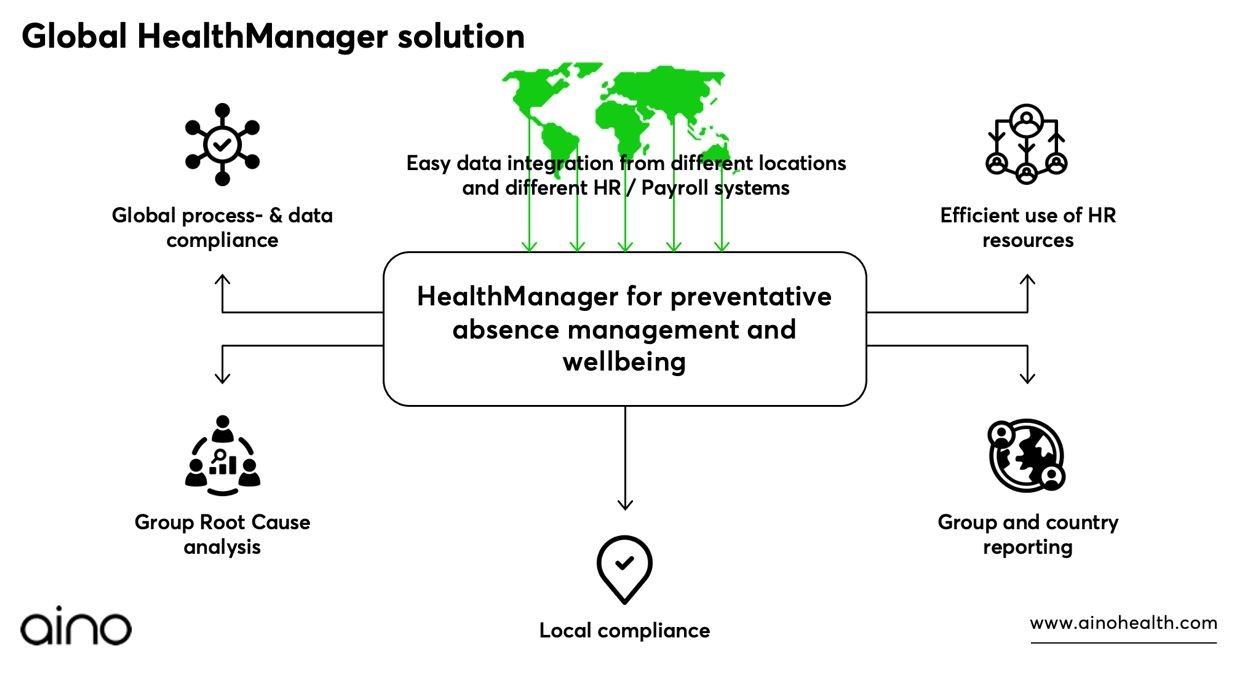The European Sustainability Reporting Standard (ESRS) is coming:
April 29th, 2022, the European Financial Reporting Advisory Group (EFRAG) issued the draft European Sustainability Reporting Standards (ESRS) on behalf of the European Commission as part of the proposed Corporate Sustainability Reporting Directive (CSRD) requirements for companies to report on sustainability-related impacts, opportunities as well as risks.
It also included a framework also providing the business an approach to measure social (workforce) sustainability, including but not limited to own workforce as well as the value chain workforce. The overall aim is to make organizational changes that drive employee sustainability. It is a data driven approach fully aligned with ESG, GRI and the UN sustainability goals such as human rights, whistle blower capability, no misconduct etc.
It is also beneficial for businesses to not only demonstrate business good from reduced environmental impact but also from increased social responsibility.
In summary, the ESRS provides businesses with a way to manage employee sustainability in a holistic and effective manner based on faithful information.
It comes down to which degree, why and how, your environmental and social sustainability agendas impact your business itself, mitigates risks and/or leverages potential opportunities from each. At Aino, we expect ESRS to drive systematic, informed, proactive and comparable habits that will also drive a healthier and a more competitive workforce and a sustainable business.
Opportunities, risks and double materiality
How does the state of your workforce, your own and your value chain, impact your business?
The key phrase used here is “double materiality impact” as this will bring the CFO, the CHRO, board members, sustainability leads and other stakeholders to the same table discussing everything from human rights, misconduct, accidents, ill health and employee work ability and how it contributes to higher engagement, retention and human productivity, operational health & safety and last but not least, basic people management. In a sense it is a compliance document on how to nurture organizational learning.
e.g. Materiality impact from too high mental health, turnover, attrition likely impact labor intensive business more than capital intensive ones. Who knows? If it does, it should be reported. If your numbers are worse than normal and result in quality issues, it should be reported.
Once we believe workforce sustainability will demonstrate double materiality impact, lost opportunity and/or high concequence costs, it will be end up on the CFOs agenda, to be reported with same regularity and seriousity as financial reporting. It may come as a chock or relief to HR to get going. HR will be part of the solution but will need top leader sponsorship. Working together with finance and sustainability leads, HR will have to connect the dots between systems, data and multiple stakeholders in the currently broken and reactive approach that has brought us the not so sustainable workforce mess we are in today and hence requires a reporting standard like ESRS.
Quod est demonstrandum.
We at Aino boldly claim that ESRS arrives in a timely manner. The global workforce currently is characterized by “the great resignation”, the “silent quitters”, deterioting mental health, toxic leaders being the dominant reason to low retention, refusing to adapt to VUCA-hybrid realities and lack of control along multiple generations at work with different needs and expectations …Yes we all know the story but we obviously need something like ESRS to do something about it.
The lack of capability, and capacity, to actually serve also increasingly result in double materiality impact. Health care is such a sector. Who will take care of the care givers if most of them are absent?
Who and when?
If you run a listed business with 250 employees and/or 40 M€ in turnover or more, you better get your data and understand the data behind that data in order to be able to report already in 2024. If you have any data. If not you need to create or capture new data. What are you going to write in your sustainability report 2024? That story starts in less than two months. 2023 will be a baseline year from which you will report towards informed targets.
“You will need to explain where your data or information came from and it needs to be faithful: comparable, verifiable, relevant and understandable.”
ESRS call the approach to report and act on insight “an ongoing due diligence”; a never-ending progress aligned with financial reporting. You need informed targets, not any normalized perception of what is “good”. The ESRS ask for facts or how you intend to get the facts until next report.
It needs to be audited. The auditor needs something to audit. Data. New data. By gender. By country. By business units, results, root causes, actions.
CFO owns materiality data. Suddenly with ESRS 1 & 2 there is now also a formal transparent value interdependence clarified between HR, the business and … the board!
That’s good since the debate about business HR has been going on for years now.
Getting started
So, you will need to report, sooner or later, if you have 250 employees / 409 M€ turnover sooner.
SMEs can wait until 2026.
However, if the business “do not believe workforce and/or environmental sustainability has material impacts, risks and opportunities in relation to own workforce or it has not adopted a policy and/or objectives as outlined, it shall disclose this to be the case and provide reasons for not having adopted a policy or objectives and may report a timeframe in which it aims to have such policy or objectives in place.” – ESRS 1
How many companies will claim they “have everything under control”? What does good look like?
So, you will need to report, sooner or later.
We have highlighted som key considerations to consider when trying to grasp the beauty of ESRS:
- Estimating double materiality assessment of your sustainability-related impacts, risks and opportunities with your own workforce
- Describing inputs from own workers to be considered in the identification of material impacts
- Outlining a structured baseline plus a set of informed targets and actions associated to key strategic decision /major changes in business model
- Measuring your initiatives to respond to material negative impacts on your own workforce as well as those measures aimed at achieving additional positive impacts from your workforce
- Recurring fundamental information quality, relevance, faithful, comparability, verifiability and understandability
- Runing and monitoring an on-going practice that responds to changes in the your activities, business model, business relationships, operating, sourcing and selling contexts
- Capturing data across business units and borders in an efficient way
The benefits of ESRS 1 & 2
ESRS 1 & 2 was created to help organizations to also measure and report on the sustainability performance of their employees. ESRS is based on the principle that sustainability is a journey, not a destination. It is a planned journey wuth informed actions called “due diligence”.
“Due diligence is an on-going practice that responds to changes in the undertaking’s activities, business model, business relationships, operating, sourcing and selling contexts. It should be considered independent of the undertaking’s reporting processes but a source of critical inputs to them and be initiated as early as possible in the development of a new activity or relationship, given that risks can be increased or mitigated already at the stage of structuring contracts or other agreements, and may be inherited through mergers or acquisitions.” – ESRS
By using ESRS 1 & 2, the business will send a strong signal to all stakeholders that they are committed to using a framework to measure and report on progress, offers guidance on how to improve their disclosure of sustainability-related information. As more and more businesses adopt ESRS standards, ESRS will likely continue to play a growing role in promoting sustainability globally in a comparable fashion.
The workforce disclosure requirement focuses on what measures the undertaking has in place to respond to material negative impacts on its own workforce as well as those measures aimed at achieving additional positive impacts. The undertaking shall disclose whether, and to what extent, its measures have the ultimate aim of delivering improved outcomes in the lives of affected workers but start from the standpoint of the negative impact that they aim to prevent, mitigate or remedy.
Aino role
Aino is industry agnostic, global and hence pan-european by design. We are part of your solution for the dynamic variables starting with the root causes of all evil. We are ready to establish your HQ baseline and get you started.
We will mend the broken wellbeing process, connect the dots in the fragmented wellbeing solution landscape between data, systems, benefits and stakeholders so you can be more proactive, earlier, mitigating risks and leveraging opportunities with a sustainable workforce. Our own research is based on 1 million individuals. We know what good looks like when it come to work ability. We also know why people get sick, not only why they report sick.
Don’t wait! Let’s start a dialogue! Click here to learn more!
Ps. We are looking forward to continue drive the discussion regarding this in CSR Sweden and CSR Europe.


